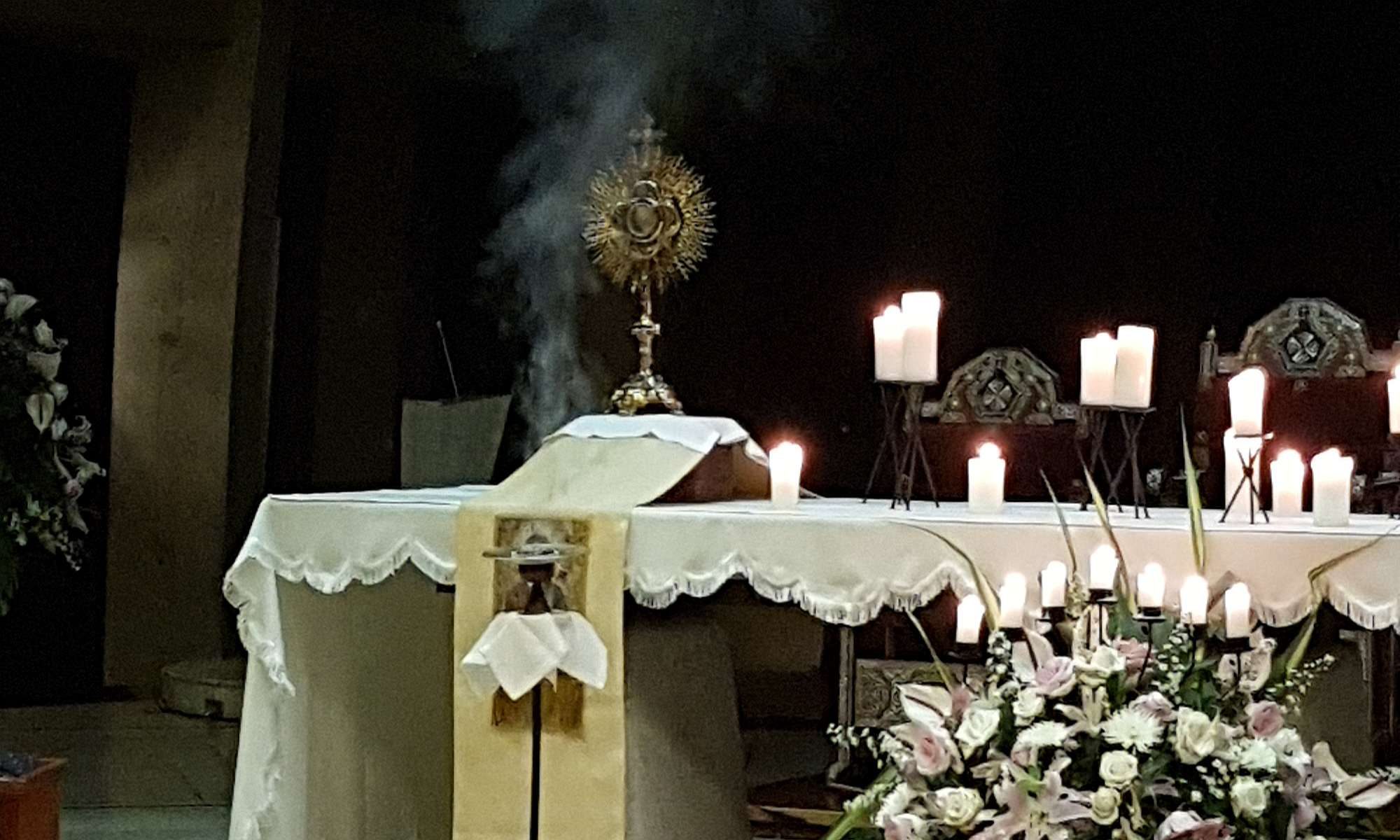#VisperasFrayNelson para el Viernes XXIV del Tiempo Ordinario
[REPRODUCCIÓN PERMITIDA – Ayúdanos a divulgar este camino de oración en las redes sociales, blogs, emisoras de radio, y otros medios.]

Alimento del Alma: Textos, Homilias, Conferencias de Fray Nelson Medina, O.P.
#VisperasFrayNelson para el Viernes XXIV del Tiempo Ordinario
[REPRODUCCIÓN PERMITIDA – Ayúdanos a divulgar este camino de oración en las redes sociales, blogs, emisoras de radio, y otros medios.]
#LaudesFrayNelson para el Viernes XXIV del Tiempo Ordinario
[REPRODUCCIÓN PERMITIDA – Ayúdanos a divulgar este camino de oración en las redes sociales, blogs, emisoras de radio, y otros medios.]
#VisperasFrayNelson para el Jueves XXIV del Tiempo Ordinario
[REPRODUCCIÓN PERMITIDA – Ayúdanos a divulgar este camino de oración en las redes sociales, blogs, emisoras de radio, y otros medios.]
#LaudesFrayNelson para el Jueves XXIV del Tiempo Ordinario
[REPRODUCCIÓN PERMITIDA – Ayúdanos a divulgar este camino de oración en las redes sociales, blogs, emisoras de radio, y otros medios.]
#VisperasFrayNelson para el Miércoles XXIV del Tiempo Ordinario
[REPRODUCCIÓN PERMITIDA – Ayúdanos a divulgar este camino de oración en las redes sociales, blogs, emisoras de radio, y otros medios.]
#LaudesFrayNelson para el Miércoles XXIV del Tiempo Ordinario
[REPRODUCCIÓN PERMITIDA – Ayúdanos a divulgar este camino de oración en las redes sociales, blogs, emisoras de radio, y otros medios.]
#VisperasFrayNelson para la Memoria de los Santos Cornelio, Papa, y Cipriano, Obispo, Mártires
[REPRODUCCIÓN PERMITIDA – Ayúdanos a divulgar este camino de oración en las redes sociales, blogs, emisoras de radio, y otros medios.]
#LaudesFrayNelson para la Memoria de los Santos Cornelio, Papa, y Cipriano, Obispo, Mártires
[REPRODUCCIÓN PERMITIDA – Ayúdanos a divulgar este camino de oración en las redes sociales, blogs, emisoras de radio, y otros medios.]
#VisperasFrayNelson para la Memoria de Nuestra Señora de los Dolores
[REPRODUCCIÓN PERMITIDA – Ayúdanos a divulgar este camino de oración en las redes sociales, blogs, emisoras de radio, y otros medios.]
#LaudesFrayNelson para la Memoria de Nuestra Señora de los Dolores
[REPRODUCCIÓN PERMITIDA – Ayúdanos a divulgar este camino de oración en las redes sociales, blogs, emisoras de radio, y otros medios.]
Segundas #VisperasFrayNelson para el Domingo XXIV del Tiempo Ordinario, Ciclo A
[REPRODUCCIÓN PERMITIDA – Ayúdanos a divulgar este camino de oración en las redes sociales, blogs, emisoras de radio, y otros medios.]
#LaudesFrayNelson para el Domingo XXIV del Tiempo Ordinario, Ciclo A
[REPRODUCCIÓN PERMITIDA – Ayúdanos a divulgar este camino de oración en las redes sociales, blogs, emisoras de radio, y otros medios.]
Primeras #VisperasFrayNelson para el Domingo XXIV del Tiempo Ordinario, Ciclo A
[REPRODUCCIÓN PERMITIDA – Ayúdanos a divulgar este camino de oración en las redes sociales, blogs, emisoras de radio, y otros medios.]
#LaudesFrayNelson para el Sábado XXIII del Tiempo Ordinario
[REPRODUCCIÓN PERMITIDA – Ayúdanos a divulgar este camino de oración en las redes sociales, blogs, emisoras de radio, y otros medios.]
#VisperasFrayNelson para el Viernes XXIII del Tiempo Ordinario
[REPRODUCCIÓN PERMITIDA – Ayúdanos a divulgar este camino de oración en las redes sociales, blogs, emisoras de radio, y otros medios.]
#LaudesFrayNelson para el Viernes XXIII del Tiempo Ordinario
[REPRODUCCIÓN PERMITIDA – Ayúdanos a divulgar este camino de oración en las redes sociales, blogs, emisoras de radio, y otros medios.]